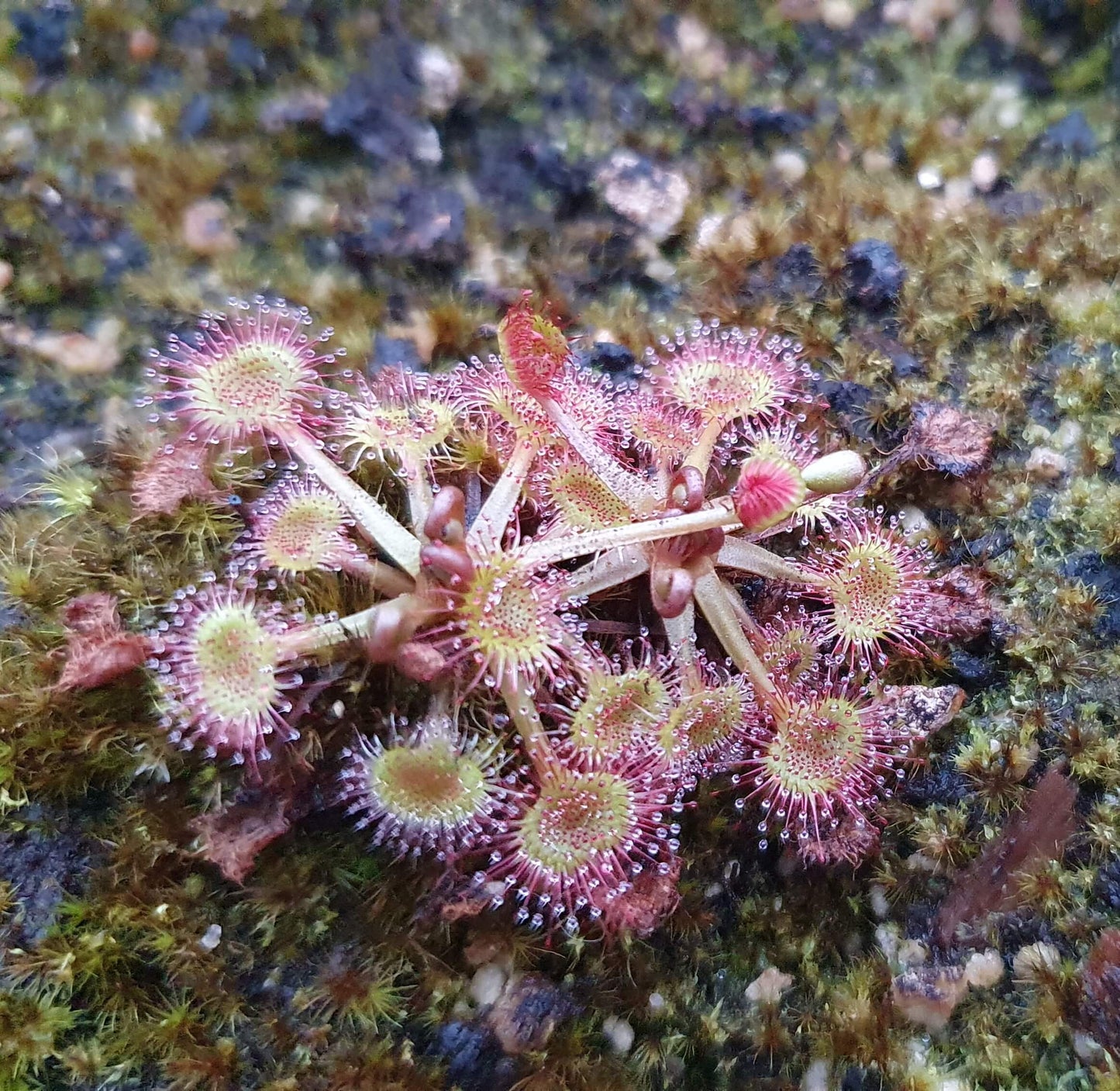Carnivorous plant, Drosera
Drosera rotundifolia
Drosera rotundifolia
Couldn't load pickup availability
Details
Details
Adult plant sent with its pot, original substrate.
Please note that the carnivorous plants you receive may not
be identical in size and appearance to those shown on the
Pictures.
Winter Expedition during dormant period October to March
Winter Expedition during dormant period October to March
Adult plant sent in dormant mode, rest assured, they will be well protected during shipping. You can see our article on shipping and packaging here
Our maintenance advice
Our maintenance advice
- In winter, keep the substrate moist and frost-free.
- In summer, bathe the pot more than 80% of the way.
- Watering by capillarity only with rainwater, osmosis, demineralized (without perfume) or Zerowater (check the water in your municipality)

Description de la plante carnivore
Drosera rotundifolia (Round-leaved Drosera) is a species that can be found in various regions of France, but it is mainly observed in mountain areas as well as in temperate regions of the northern hemisphere, notably in South America. North, Europe and Asia. The leaves of Drosera rotundifolia are usually green, sometimes with reddish undertones, and the glandular tentacles on the leaves can be bright red when exposed to sunlight.
Maintenance tips :
Temperature: Between 15°C and 40°C, can withstand freezing temperatures down to -10°C, but only for short periods with positive daytime temperatures.Water: Always immerse the pot to approximately 70% of its height in rain, demineralized or osmosis water.
Light: Full sun or near a sunny window to ensure optimal growth. If natural light is insufficient, consider using suitable artificial lighting, including LEDs.
Dormancy: Requires a period of dormancy from September until the end of February and beginning of March depending on the region. All leaves will turn brown-black and die to leave a hibernaculum during this time. Leave them outside in full sun, always in a soggy substrate.
You can learn more about proper care here.
Substrate: Choose a substrate with blond sphagnum peat mixed with perlite. I recommend a mixture of 50% peat and 50% perlite. You can also find a special substrate designed for carnivorous plants in our online store here.

